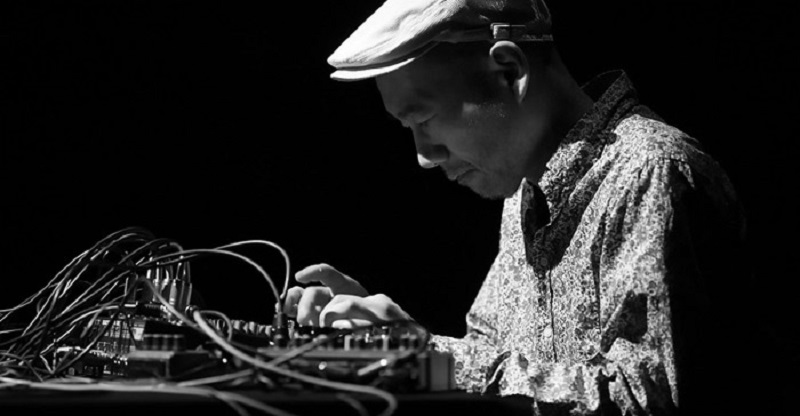Pioneering Japanese composer to work at Aberystwyth University

Toshimaru Nakamura
14 February 2018
Japanese works from Aberystwyth University’s renowned ceramics collection are set to provide the inspiration for an experimental music project led by a leading Japanese sound artist.
Toshimaru Nakamura, described as one of the most important electronic composers of the 20th and 21st centuries, will spend a week working in Aberystwyth at the beginning of March 2018.
The ceramics collection at the School of Art features works from contemporary Japanese ceramicists, along with Bizenware works dating from the 19th century.
Working with experimental musicians Jenn Kirby, Dafydd Roberts, Andrew Leslie Hooker and Aberystwyth born harpist Rhodri Davies, Nakamura will use these pieces to develop an object score as a basis for an improvised musical performance.
An additional dimension to the sonic recipe will be provided by Dr Fred Labrosse from the Department of Computer Science who will scan the selected ceramics.
The data gleaned from the scans will be fed into software that will convert their physical attributes into a series of sounds for making music.
Through this process, ceramic glaze, depth and luminosity can give rise to unexpected tonalities affecting pitch, amplitude and timbre.
The group will also spend time working in a recording-studio.
This part of the project will be documented by film maker Dr Greg Bevan from the Department of Theatre, Film and Television Studies and shown at the 2019 Aberystwyth International Ceramics Festival.
The ceramics chosen by Nakamura and his collaborators will also go on show in the Arts Centre’s ceramics gallery in March 2018.
The project will culminate with Nakamura’s Welsh debut performance – Listen to the Voice of Fire at Ceredigion Museum on Saturday 10 March 2018 at 7.30pm.
The public performance will follow a project workshop with Nakamura at the Foundry Studio in the Parry Williams Building on Friday 9 March 11am - 1pm (free admission).
Open to students and the wider community, this will be a rare opportunity to see Nakamura’s approach at close hand. Anyone with an interest in contemporary electronic music is warmly encouraged to attend this free event.
“Presenting a premier Japanese experimental sound artist to new audiences in mid and west Wales will be thrilling,” said Dr Roberts, “and give confidence to the emerging Wales Sound Network to develop international links with Japan, a country with longstanding dynamism in experimental music.
“We have an opportunity now to develop new links with Japanese artists and academic and arts worlds and potential in future to develop this into funded projects to extend mutual understanding and activity.”
Nakamura’s visit to Wales has been made possible through financial support from the Great Britain Sasakawa Foundation and the Daiwa Anglo Japanese Foundation.
Dr Roberts added: “Both these funders recognise how hard it is to bring stellar performers to centres outside of large conurbations.”
Listen to the Voice of Fire works is staged in partnership with Ceredigion Museum.
Toshimaru Nakamura
Nakamura’s instrument is the no-input mixing board, which describes a way of using a standard mixing board as an electronic music instrument, producing sound without any external audio input.
Nakamura pioneered this approach to the use of the mixing board in the mid 1990's and has since then appeared on over one hundred audio publications, including nine solo CD's.
He has performed throughout Europe, North America, Argentina, New Zealand, Australia, Korea, China, Singapore and Malaysia, performing and recording both as a soloist and in collaboration with numerous other musicians.
As an active organizer of concerts in Tokyo, Nakamura has helped many musicians to travel to Japan and find places to perform, both with himself and with others.
From 1998 to 2003 Nakamura and Tetuzi Akiyama ran the concert series Improvisation Series at Bar Aoyama and then later the Meeting at Off Site series of concerts.



